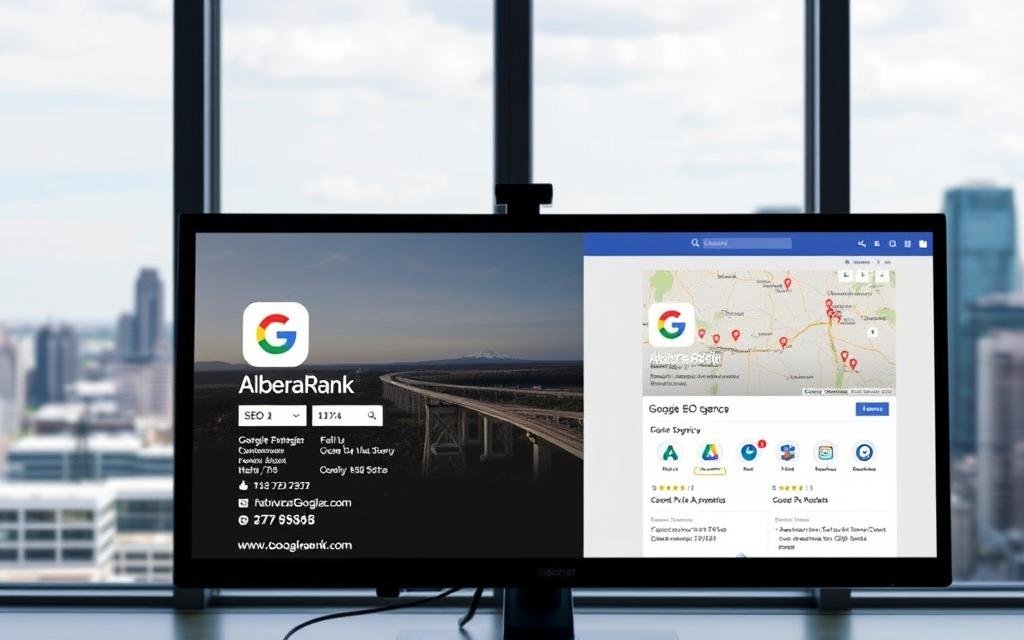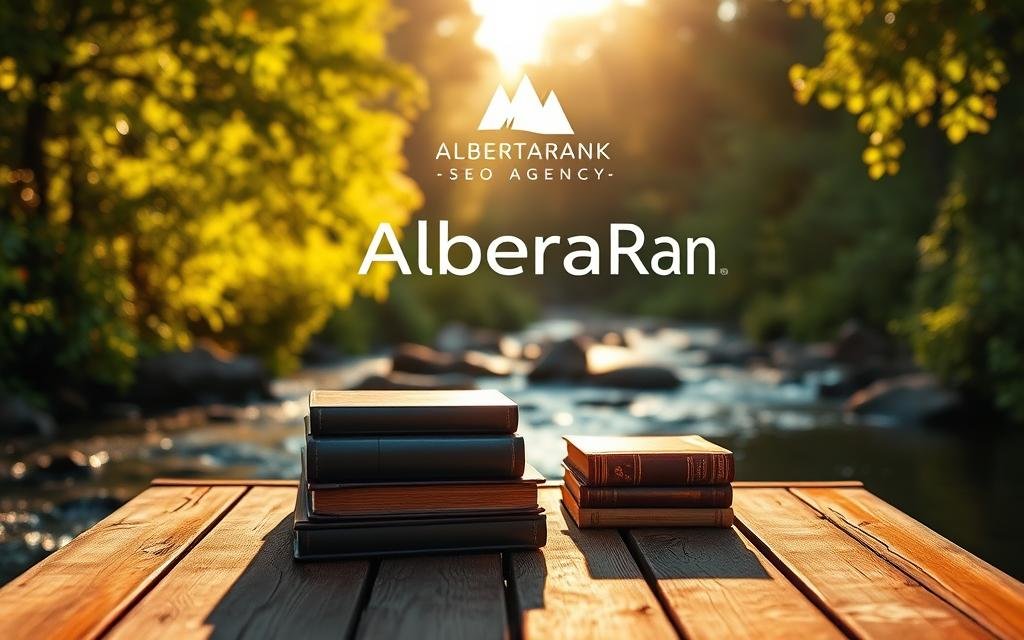Can a few well-placed links change your local rankings and bring real customers to your door? We ask that because, in 2025, links still act like votes in Google’s system — but not all votes carry the same weight.
At AlbertaRank, we explain this in plain English for Calgary and Edmonton businesses. This short guide shows why links matter, which paths to use, and how to boost your website without costly fluff.
We cover the four core ways to get links: adding, asking, risky buying, and earning. We stress safe, relationship-driven outreach and strong internal linking to pass authority from helpful assets to your money pages.
Our promise: follow this guide and you’ll get link strategies that support content and technical seo for sustainable, measurable growth — not vanity metrics. Call us in Calgary at 403 671 3278, Monday to Friday, 9am–5pm.
Key Takeaways
- Links still influence search and can lift local rankings when they are high quality.
- There are four paths to acquire links; relationship-driven outreach is safest for small businesses.
- Foundational citations and internal linking support long-term website authority.
- Competitor insight helps prioritise outreach and save time on effort.
- Measure outreach, timelines, and responses to focus on metrics that move the needle.
What Is Backlink Building and Why It Matters for SEO
Think of web links as neighbourhood recommendations that help search engines trust your business.
We define link building as the ongoing process of earning, asking for, or adding links from other websites to your pages to improve visibility in search results. These endorsements — or backlinks — make your website look more authoritative to a search engine.
How links act like votes in PageRank
Each relevant link is a simple vote. Votes from trusted sites count for more. That’s PageRank in plain terms.
“More high‑quality links typically correlate with higher rankings, but links are one of several ranking signals.”
Beginner-friendly outcomes and safe practices
What you can expect: better local rankings, more qualified traffic, and more calls from nearby customers when links are relevant and earned over time.
- Mix foundational profiles with editorial links for legitimacy and authority.
- Focus on relevance and quality over raw counts — one good link can beat ten weak ones.
- Avoid paying for links without proper attributes; that risks penalties.
| Type of Link | What it Signals | Typical Value |
|---|---|---|
| Directory / Profile | Legitimacy (NAP consistency) | Low individual, important collectively |
| Editorial mention | Topical authority and trust | High when from relevant sites |
| Sponsored/paid | Traffic only if tagged properly; risk if not | Variable; risky without rel=”sponsored” |
Understanding Link Value: What Makes a Good Backlink Today
A single, well‑placed link from a trusted local site can move the needle for Calgary and Edmonton companies. We use simple signals to judge value so teams can act with confidence.
Authority: domain- and page‑level signals
We weigh both site authority and the specific page strength. Metrics like Domain Rating or Domain Authority help, but the page’s topical power matters most.
Relevance: topical and contextual fit
Links from related websites and on‑topic pages pass more trust. A mention inside an article about small business taxes beats a footer profile on an unrelated site.
Anchor text: descriptive, natural, and safe
Let authors write natural text. Descriptive anchors help users and search engines. Avoid forced exact‑match phrasing that looks manipulative.
Placement: the “reasonable surfer” model
Links in main content and paragraph‑level placements usually carry higher value than sidebars or footers. If a human wouldn’t click it, its value is limited.
Link attributes: follow, nofollow, sponsored, UGC
rel=”follow” links typically help rankings. rel=”nofollow” and rel=”sponsored” often behave like referral signals. rel=”ugc” marks user content. Know the attribute before you prioritise outreach.
“Focus on relevance and page context — a single editorial link from a trusted Alberta news site can outperform many weak listings.”

| Signal | What to check | Why it matters |
|---|---|---|
| Domain authority | DR/DA and topical history | Shows site‑level trust and reach |
| Page relevance | On‑topic content + editorial context | Improves topical authority for your page |
| Placement & anchor | Main content + natural anchor text | Higher click likelihood and value |
- Practical rule: track unique domains, not raw link counts.
- Review both domain and page strength when judging prospects.
- Go for descriptive anchors and in‑text placements that real people would use.
Four Core Ways to Get Links (and Which to Prioritise as a Beginner)
Our focus is clear: safe, local-friendly link tactics that deliver measurable results for Calgary and Edmonton businesses. Below we map the four buckets and show what to start with first.
Earn links: create assets people want to cite
Publish useful content — local guides, original data, or tools — that journalists and local websites naturally reference. This is the highest-value route for long-term gains.
Ask for links: smart outreach and relationships
Personalised outreach wins. Build rapport on social, attend community events, then send short, value-first requests. Respect editors’ time and pitch genuine fit.
Add links: foundational profiles and citations
Secure your Google Business profile and consistent NAP entries. Profile and directory listings are low-lift wins that help discovery and trust, even if each one is weak alone.
Buying links: risks and why to avoid
Paid links aimed at manipulation can trigger penalties. If compensation exists, insist on rel=”sponsored” or rel=”nofollow” and focus on transparent, compliant options.
- Priority: earn then ask; set up profiles as baseline.
- Map a 30-day plan: GBP, key citations, plus one linkable asset.
- Measure unique domains, reply rates, and links per 100 emails.
Our strategy balances safety and impact so your site gains authority without risky shortcuts. This process helps search engine trust your business and attract real customers.
Backlink Building Basics for Alberta Businesses
We start with simple, practical steps that make your Alberta business easy to find online. Locking down your Google Business Profile and consistent contact details is the first move. These items help search engines and real customers trust your website and phone info.

Foundational links: GBP, NAP citations, and key directories
We walk clients through a tight GBP setup: accurate name, address, phone, categories, hours and regular updates. A correct profile improves visibility in local search and drives clicks to your website.
Maintain consistent NAP across social profiles, review sites and directories. Small inconsistencies confuse search engines and dilute authority for your brand.
Local relevance: community sites, chambers, and associations
Target Alberta-specific sites first—chambers, industry associations and trusted local directories in Calgary, Edmonton, Red Deer and Lethbridge. These links often start as profile or citation entries but can grow in value as the sites gain authority.
- Prioritise quality over mass submissions; pick sites real customers use.
- Ask happy customers for reviews on Google and top industry review sites to support visibility in the local pack.
- Use partner opportunities: feature suppliers on your website and request a featured partner link back on their sites.
- Track and fix duplicates with a quarterly audit to keep everything accurate and strengthen your authority signals.
Competitor Backlink Research: Find What Already Works
We start competitor research by mapping who actually links to the sites outranking you. This saves time and points your outreach at proven prospects that are likelier to say yes.
First, identify referring domains and the specific pages that draw the most links. Homepages, free tools and evergreen blog posts often lead.
Next, compare patterns. See what topics, formats and angles attract links in your niche. That data tells you which assets to create or improve.
- Map domains linking to multiple competitors — they are warmer prospects.
- Set alerts for new competitor links so you can pitch while the story is fresh.
- Prioritise websites with real traffic and relevant audience, not vanity counts.
| Action | Why it matters | Outcome |
|---|---|---|
| Map referring domains | Find proven sources that link in your niche | Focused outreach list |
| Identify top pages | Reveal which assets attract the most links | Content ideas (tools, guides, research) |
| Set alerts | Catch opportunities while timely | Higher success rate on outreach |
We use these insights to build a targeted prospect list with contacts, context and timing that match Alberta topics and seasons.
Proven Tactics You Can Start with Today
Begin with repair and outreach tactics that directly help Alberta editors and webmasters. We focus on practical, value-first contributions that respect editorial time and protect your brand.

Broken link replacement: find 404 pages on relevant websites with several referring domains. Create a better resource and offer it as a direct replacement. This gives editors a simple fix and gains a high-quality link in main content.
Unlinked mentions: monitor for brand references on blogs and news sites. A short, polite request for a credit link often converts those mentions into lasting links that help local SEO.
Guest posts, niche edits and digital PR
We pitch guest posts and niche edits only when we add real value—unique angles, local case studies or exclusive data. Over‑optimised anchors are off the table; helpful context wins.
Digital PR focuses on timely, local stories and proprietary research that Alberta media and marketing blogs can’t ignore. Expect low response rates; personalise each pitch and track responses, opportunities and links earned.
“Consistent, small actions compound — a weekly rhythm of outreach and quality checks beats one-time campaigns.”
- Quality checks: site relevance, organic traffic, editorial standards, placement in main content.
- Repurpose assets: stats, infographics, quotes — multiply pitch angles.
- Track: responses, open opportunities, and links per tactic to refine strategy.
Create Linkable Assets that Naturally Attract Links
We design practical assets that local editors and busy business owners actually use.
Original research and quick surveys help you publish unique data that other sites cite. Run a short customer poll or anonymise internal metrics to create a clear, local example. Summarise findings in a press-ready paragraph and link to the full study on your site.

Free tools, calculators and templates
Tools and templates solve recurring problems. A cost calculator, maintenance checklist, or Alberta salary snapshot becomes a natural citation for blogs and industry posts. Publish the tool with clear headings, schema, and internal links to related service pages.
Visuals: infographics and reusable charts
Strong visuals get shared. We create infographics and charts with embed codes so publishers can credit your site. Pair visuals with concise copy and update them seasonally to keep attracting new links.
- Pick asset types users need: calculators, checklists, or local studies.
- Fast data paths: short surveys or anonymised internal analytics.
- Packaging: long-form explainers + visuals + press summaries for outreach.
- Maintenance: update assets and track which formats earn the most unique domains.
| Asset Type | Why it earns links | Best use |
|---|---|---|
| Original research | Unique local data that reporters cite | Press summaries, long-form blog post |
| Interactive tool | Practical value that bloggers recommend | Embed on service pages, share with partners |
| Infographic/chart | Visual shareability; easy attribution | Embed code + short explainer |
We help Alberta brands pick the right formats, tie assets to seasonal demand, and publish with SEO-friendly structure so your content earns quality links over time.
Anchor Text and On-Page Context: Let Relevance Do the Work
Natural anchors win. Anchor text helps search engines understand what a linked page is about, but forced, exact‑match anchors raise flags. We avoid risky patterns that can harm your brand or trigger penalties.
Place links inside helpful paragraphs and let the surrounding content explain the value. When editors or partners see a useful sentence, they often pick descriptive anchors that read well to people.
We advise diversified anchors: brand, URL, partial match and generic phrases. This keeps your profile organic and safe across the industry.
- Descriptive anchors: help users and give clear signals without keyword stuffing.
- Earned context: write paragraphs that describe the resource so the link feels natural.
- Internal style guide: set rules for your outbound links to keep content consistent across pages.
- Avoid boilerplate: sitewide footer links add little value compared with in‑text placements.
Brief contributors with sample sentences rather than rigid anchors. For example: “See the Alberta home energy rebates guide for details” reads like a normal sentence and makes the link useful to readers.
“Let the content carry the meaning — editors choose anchors that benefit readers, and search engines reward natural patterns.”
Internal Linking: Pass Authority to Your “Money Pages”
A smart internal linking plan turns useful articles into traffic engines for your services. We aim to pass authority from high-value assets to the commercial pages that drive leads and sales.
Building clusters: assets to commercial pages
Our clustering approach maps topic hubs that connect strong content to service pages with clear, descriptive anchors. It’s often hard to get external links directly to commercial pages, so we focus on earning links to assets and routing that value inward.
Auditing internal links for coverage and prominence
We audit the website to find orphan pages and thin link paths that block authority flow. Then we prioritise in-body placements near the top so users and search see the link as important.
- Standardise navigation, breadcrumbs and contextual links.
- Use internal links for seasonal promotions and timely hubs.
- Limit links per page to avoid dilution and maintain clarity.
- Refresh older posts with new links to recent service pages.
| Task | Why it matters | Metric to track |
|---|---|---|
| Cluster mapping | Connect assets to money pages | Rankings for target page |
| Orphan audit | Find pages with no internal traffic | Impressions and clicks |
| Prominent placement | Signals importance to users and search | CTR and conversions |
We measure impact by tracking target pages’ rankings, impressions and conversions after interlinking updates.
Local Off-Page Signals That Support Backlinks
A clear, up-to-date profile and local content tell search engines your business is real and active.
We optimise your Google Business Profile with categories, services and weekly posts. Photos, timely updates and UTM-tagged links help us measure calls, direction requests and website visits that convert to customers.
Consistent NAP across your website, major directories and social profiles reduces confusion. We keep a single source of truth for your contact details as you add locations.
Reviews and local content earn mentions on nearby websites. Foundational links are often nofollow, but they reinforce legitimacy and support visibility in local search.
- We refine GBP entries and add weekly updates to boost engagement.
- We design an ethical review process that lifts visibility and conversion.
- We publish community news and case studies that attract local mentions and links.
- We use partnerships and sponsor opportunities to gain relevant citations.
“Small, steady signals — correct listings, fresh photos and honest reviews — make your site and brand easier to trust online.”
Safe vs. Risky Practices: Stay Within Google’s Guidelines
Protecting your brand means choosing tactics that last, not quick wins that vanish. We follow clear rules so your site gains steady authority and search visibility without penalties.
Avoiding paid links without proper attributes
Paid links intended to influence rankings must use rel=”sponsored” or rel=”nofollow.” Failing to mark compensated placements risks manual actions from search engines.
When compensation exists, we document the agreement and the attribute used. That transparency protects your reputation and keeps results durable.
Steering clear of spammy additions and over‑optimised anchors
Mass posting a link across forums, comments or low‑quality directories hurts more than it helps. These sites offer little value and can damage brand trust.
We enforce an anchor text policy to avoid repetitive exact‑match text. Instead, we favour natural, varied phrases that read well for users and for engines.
| Risk | Why it harms | Our safe alternative |
|---|---|---|
| Paid links without attributes | Penalty risk and loss of trust | Documented sponsorship with rel=”sponsored” or no follow |
| Mass forum/comment posts | Low impact; brand damage | Earn editorial placements by offering unique value |
| Over‑optimised anchor text | Triggers algorithm flags | Diversified, descriptive anchors in natural copy |
Our way: we vet websites, track profiles for toxic patterns, and teach your team what’s allowed. This strategy preserves long‑term gains and improves user value, not just checkbox metrics.
Tracking Progress: Measure What Matters
Clear metrics remove guesswork — we focus on signals that predict growth.
We report what matters: unique referring domains, authority trend and the impact on leads. Our dashboards show new vs. lost links and the total number of domains so you can spot gains or issues fast.
We track anchor diversity, link attributes and placements on pages to judge quality, not just counts. We also monitor organic traffic and rank moves for target pages to link performance with business results.
New vs. lost links, authority trends, and referring domains
We set alerts for new and lost links, and chart authority over time. Monthly reporting highlights trends and actions for the next sprint.
Monitoring competitor gains to uncover fresh opportunities
We watch competitor links with alerts so you can react quickly. Tagging by tactic (PR, guest, broken link) reveals which approach yields the best returns.
- Dashboards for new vs. lost links and unique domains
- Authority trend + traffic and conversion context
- Competitor alerts and prospect CRM to compound outreach
- Correlation of link gains with ranking and lead changes
“Progress is gradual; our reporting shows the path and the next practical steps.”
How AlbertaRank Does Backlink Building Differently
We pair smart research with local knowledge to get meaningful links from publishers your customers trust.
Our focus is simple: practical, measurable work that helps Calgary and Edmonton companies rank and convert. We avoid agency fluff and put budget into activities that earn authority and leads.
Targeted, results‑oriented link acquisition without big‑agency bloat
We run lean. That means less overhead and more hours spent on editorial outreach, PR assets and competitor‑led prospecting.
We prioritise assets that attract citations naturally. That includes local studies, timely content and tools that reporters and partners actually use.
Local focus across Alberta with transparent, measurable growth
Our outreach references Calgary and Edmonton context and seasonality to improve pitch acceptance.
- Earn editorial links from relevant publishers, partners and associations.
- Track unique domains, rankings for target pages, and leads — not vanity metrics.
- Hard‑gate quality: clear editorial context, real traffic, and safe, descriptive anchors.
| Focus | Why it works | Metric |
|---|---|---|
| Local editorial PR | Trusted citations that move rankings | Unique referring domains |
| High‑value assets | Content reporters cite and share | Links to asset + traffic |
| Internal linking | Passes authority to money pages | Rank gains for target pages |
Want focused results? Contact AlbertaRank in Calgary, AB T3N 1J5, 403 671 3278. Hours: Mon–Fri, 9am–5pm. Find us on Instagram, Facebook, TikTok, LinkedIn, YouTube and X: @albertarank or /albertarank.ca.
Conclusion
This final note gives you a practical playbook to earn quality links and lift local rankings.
Start by understanding link value, secure foundational profiles, study competitors, publish useful assets, and run focused outreach. Pick safe tactics—earn and ask for editorial links and keep paid arrangements documented and transparent.
Use internal links to funnel authority to your key service pages so your website converts visits into calls. Track new vs. lost links, unique domains, authority trends and ranking moves to prove progress.
Alberta‑specific chances matter: local media, chambers and events create credible mentions that real people click. Avoid short‑term schemes; the right approach yields steady search results over time.
Need help? Call AlbertaRank in Calgary at 403 671 3278 (Mon–Fri, 9am–5pm). Follow us for practical tips and cases on Instagram, Facebook, TikTok, LinkedIn, YouTube and X: @albertarank or /albertarank.ca. We promise: build the right links, the right way, and your website will earn greater visibility and results in Alberta.

